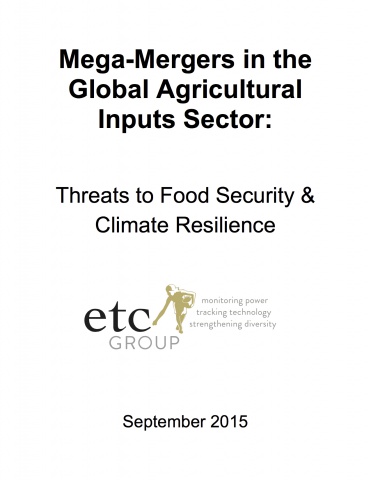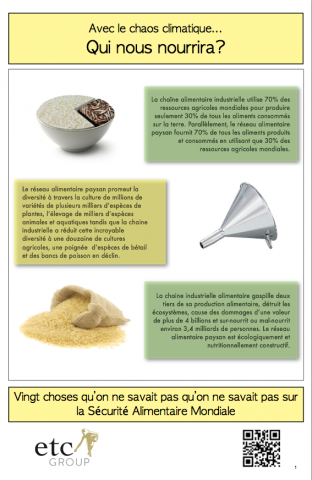As the synthetic biology industry and the extreme extraction industry move towards deeper collaboration, the climate and biosafety risks and threats from both will become more entangled.
Reports
an ETC Group and Heinrich Böll Stiftung Report
Powerpoint Presentation and Webinar
Today, six corporations control global markets for industrial seeds/agrochemicals. They determine the priorities and future direction of agricultural research. What are implications of ag mega-mergers for food sovereignty and climate change? What can be done?
The Industrial Food Chain or the Peasant Food Webs?
The Food Systems We Don’t Know We Don’t Know – Fifty years ago, at the first World Food Congress in June 1963, the UN was told that, “We have the means, we have the capacity, to wipe hunger and poverty from the face of the earth in our lifetime – we need only the will.” These words have been the mantra of every food conference since. Yet governments still face major gaps in their knowledge about our food supply and consumption. This became horribly apparent in 2007 when governments failed to recognize that a global food crisis was at hand. Fifty years after policymakers committed to end hunger they need to sort out why governments don’t have the means, the capacity, or the will to end hunger.
The State of Corporate Concentration, 2013
In this Communiqué, ETC Group identifies the major corporate players that control industrial farm inputs. Together with our companion poster, Who will feed us? The industrial food chain or the peasant food web?, ETC Group aims to de-construct the myths surrounding the effectiveness of the industrial food system.




